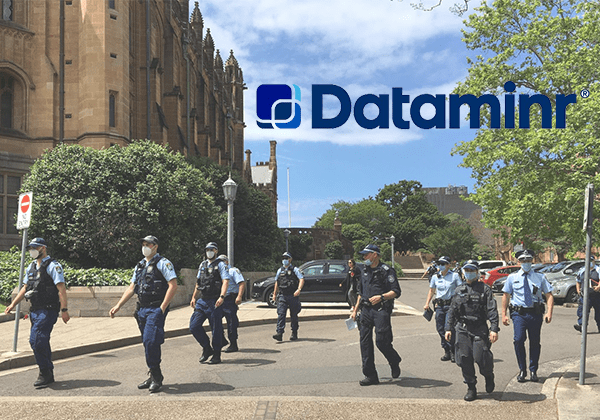GIPA documents reported on by Honi Soit reveal that the University of Sydney used Dataminr, an artificial intelligence information alert system, to keep track of planned protest action in October last year.
A University of Sydney spokesperson told Honi that Dataminr was only used “for a week on a trial basis” and that neither it nor similar tools are presently being used.
Dataminr, which is valued at $4.1 billion, surveys publicly accessible information through algorithms to provide its clients with instant alerts on events. It operates distinct models for private and public sector organisations.
A series of reports last year in The Intercept revealed that during Black Lives Matter protests, Dataminr “relayed tweets and other social media content…directly to police” while “facilitat[ing] the surveillance of protests, including nonviolent activity, siphoning vast amounts of social media data from across the web and converting it into tidy police intelligence packages.”
Dataminr is one of very few companies authorised to access the entire Twitter ‘firehose.’ It is Twitter’s only data partner which is allowed to “resell the complete stream of tweets.” In 2016, Twitter cut off US security agencies’ access to the ‘firehose’ after Dataminr began to work with intelligence agencies. Dataminr has worked with, among others, the CIA, FBI, and the Department of Defense. It holds contracts with a number of local police forces, including the Minneapolis Police Department, which used Dataminr during protests following the death of George Floyd.
The University was alerted to a teach-out organised by the NTEU on 13 October last year after Dataminr picked up a tweet by Senior Lecturer of Modern Chinese History David Brophy promoting the event. The alert was subsequently forwarded to Cheryl Wharton, the University’s Operations Manager in the Campus Security Unit.
In a statement, Brophy told Honi that “staff and student actions to defend higher education should be something that the University welcomes, not something they monitor with digital warning bells. Unfortunately, surveillance of staff seems to be yet one more practice that today’s universities have borrowed from the corporate sector. Given we’re in a time of austerity, I’d very much like to know how much the university is spending on software and staff to spy on us, and how many academic jobs that outlay could pay for.”





